Related Research Articles

In biological classification, subspecies is a rank below species, used for populations that live in different areas and vary in size, shape, or other physical characteristics (morphology), but that can successfully interbreed. Not all species have subspecies, but for those that do there must be at least two. Subspecies is abbreviated as subsp. or ssp. and the singular and plural forms are the same.

The black redstart is a small passerine bird in the genus Phoenicurus. Like its relatives, it was formerly classed as a member of the thrush family (Turdidae), but is now known to be an Old World flycatcher (Muscicapidae). Obsolete common names include Tithys redstart, blackstart and black redtail.

The greenish warbler is a widespread leaf warbler with a breeding range in northeastern Europe, and temperate to subtropical continental Asia. This warbler is strongly migratory and winters in India. It is not uncommon as a spring or early autumn vagrant in Western Europe and is annually seen in Great Britain. In Central Europe large numbers of vagrant birds are encountered in some years; some of these may stay to breed, as a handful of pairs does each year in Germany.
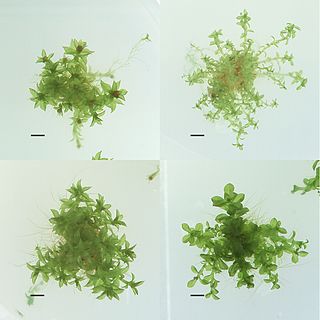
In evolutionary ecology, an ecotype, sometimes called ecospecies, describes a genetically distinct geographic variety, population, or race within a species, which is genotypically adapted to specific environmental conditions.

In biological taxonomy, race is an informal rank in the taxonomic hierarchy for which various definitions exist. Sometimes it is used to denote a level below that of subspecies, while at other times it is used as a synonym for subspecies. It has been used as a higher rank than strain, with several strains making up one race. Races may be genetically distinct populations of individuals within the same species, or they may be defined in other ways, e.g. geographically, or physiologically. Genetic isolation between races is not complete, but genetic differences may have accumulated that are not (yet) sufficient to separate species.
In biology, a species complex is a group of closely related organisms that are so similar in appearance and other features that the boundaries between them are often unclear. The taxa in the complex may be able to hybridize readily with each other, further blurring any distinctions. Terms that are sometimes used synonymously but have more precise meanings are cryptic species for two or more species hidden under one species name, sibling species for two species that are each other's closest relative, and species flock for a group of closely related species that live in the same habitat. As informal taxonomic ranks, species group, species aggregate, macrospecies, and superspecies are also in use.

In parapatric speciation, two subpopulations of a species evolve reproductive isolation from one another while continuing to exchange genes. This mode of speciation has three distinguishing characteristics: 1) mating occurs non-randomly, 2) gene flow occurs unequally, and 3) populations exist in either continuous or discontinuous geographic ranges. This distribution pattern may be the result of unequal dispersal, incomplete geographical barriers, or divergent expressions of behavior, among other things. Parapatric speciation predicts that hybrid zones will often exist at the junction between the two populations.

Crotalus scutulatus is known commonly as the Mohave Rattlesnake. Other common English names include Mojave Rattlesnake and, referring specifically to the nominate (northern) subspecies: Northern Mohave Rattlesnake and Mojave Green Rattlesnake, the latter name commonly shortened to the more colloquial “Mojave green”. Campbell and Lamar (2004) supported the English name “Mohave (Mojave) rattlesnake” with some reluctance because so little of the snake’s range lies within the Mojave Desert.

The Bornean bearded pig, also known as the Sunda bearded pig or simply bearded pig, is a species in the pig genus, Sus.
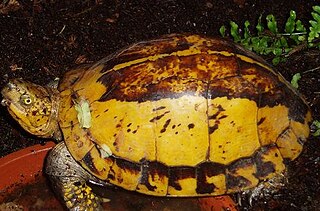
The Indochinese box turtle, Vietnamese box turtle, or flowerback box turtle is a species of Asian box turtles from China, northern and central Vietnam, Laos, and possibly northeastern Cambodia. It is found in high altitude woodland where it tends to hide in the undergrowth. There is considerable confusion as to the taxonomy of this species with several subspecies being recognised by some authorities. and not by others. The International Union for Conservation of Nature has rated its conservation status as "critically endangered".

A hybrid zone exists where the ranges of two interbreeding species or diverged intraspecific lineages meet and cross-fertilize. Hybrid zones can form in situ due to the evolution of a new lineage but generally they result from secondary contact of the parental forms after a period of geographic isolation, which allowed their differentiation. Hybrid zones are useful in studying the genetics of speciation as they can provide natural examples of differentiation and gene flow between populations that are at some point on the continuum between diverging populations and separate species with reproductive isolation.

The sooty fox sparrow contains the darkest-colored taxa in the genus Passerella. It is currently classified as a "subspecies group" within the fox sparrow pending wider-spread acceptance of species status. It has long been suspected to be a separate evolutionary lineage due to morphological distinctness, and this is confirmed by analysis of mtDNA sequence and haplotype data. This group appears to be most closely related to the thick-billed and/or slate-colored fox sparrows.

The slate-colored fox sparrow group comprises the Rocky Mountain taxa in the genus Passerella. It is currently classified as a "subspecies group" within the fox sparrows pending a more-thorough genetic assay of all forms.
In biology, a cline is a measurable gradient in a single characteristic of a species across its geographical range. Clines usually have a genetic, or phenotypic character. They can show either smooth, continuous gradation in a character, or more abrupt changes in the trait from one geographic region to the next.

The buff-tailed sicklebill is a species of hermit hummingbird from the lower Andes and adjacent west Amazonian lowlands from southern Colombia and northern Ecuador to Peru and Bolivia.
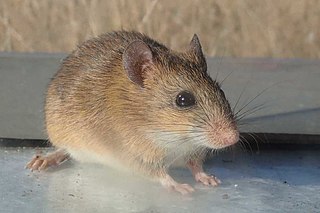
The Tete veld aethomys or Tete veld rat is a species of rodent in the family Muridae. It is found in South Africa and Eswatini. Its natural habitats are temperate forests, shrubland, and grassland. The common name refers to the type locality, Tete, on the Zambesi River.
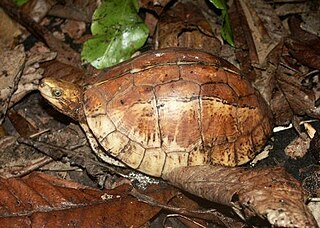
Bourret's box turtle, also known commonly as the central Vietnamese flowerback box turtle and the Indochinese box turtle, is a species of turtle in the family Geoemydidae. The species is endemic to Southeast Asia.
The San Bernardino kangaroo rat is a species of rodent in the family Heteromyidae. It is one of 19 recognized subspecies of Merriam's kangaroo rat that are spread throughout the arid regions of the southwestern United States and Mexico.

The East Siberian lemming, Eastern Siberian brown lemming, or Ognev's lemming is a species of lemming endemic to Russia, where it has a disjunct distribution throughout parts of Siberia east of the Verkhoyansk Range.
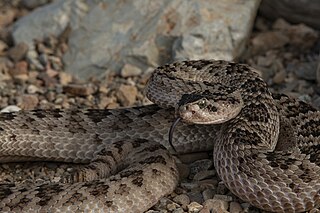
Crotalus scutulatus salvini, commonly known as the Huamantlan rattlesnake, is a venomous pit viper, currently classified as a subspecies of C. scutulatus that is found in mainland Mexico, at the southern end of the distribution of C. scutulatus. The subspecific epithet honors the nineteenth century British naturalist Osbert Salvin.
References
- 1 2 Mayr E, Ashlock PD (1991). Principles of Systematic Zoology. Second edition. McGraw-Hill. ISBN 0-07-041144-1.